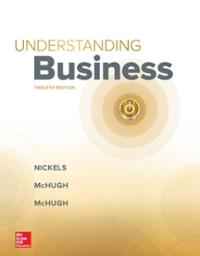Question
Suppose the government of a municipality is trying to determine how to deal with pesticide contamination of its water supply. It wants to undertake a
Suppose the government of a municipality is trying to determine how to deal with pesticide contamination of its water supply. It wants to undertake a benefit-cost analysis of two alternative policy options for controlling pesticides:
- Upgrading its municipal water treatment plant to remove pesticides, or:
- Banning the use of the offending pesticides in the metropolitan area.
Assume that either technique reduces the pesticides to a level, which does not adversely affect human health. The cost of these control options are as follows:
Municipal treatment upgrades
Capital costs = $13 million. The new plant is constructed over the course of one year. It starts operating at the beginning of year two. Once the plant begins operation, it has an operating cost of $1.7 million per year. Once constructed the plant lasts a fixed number of years, then must be replaced with a new plant. The scrap value is zero.
Pesticide ban
Annual operating costs due to substitution of non-toxic methods of controlling "pests" = $7 million per year. These costs would last forever.
Benefits
The benefits of pesticide control are many. But suppose the only information the government has that is related to the benefits of controlling pesticides is the following:
Households have switched from using tap water for consumption to bottled water because of the contamination. Before the pesticide contamination, the demand for bottled water was given by the following function:
Qt = 8 - 0.5Pt
where Qtis consumption per household, per month, of containers of bottled water, and Ptis the price per container.
After the contamination occurs, the demand curve shifts to:
Qt = 12 - 0.5Pt
Assume that the price of bottled water is $3 per container and the price stays constant even after the demand shift. There are 10,000 households in the community.
Answer the following questions:
- Calculate the Net Present Value of:
- The pesticide ban,
- The treatment plant if it operates for 5 years after the year it is built, and
- The treatment plant if it lasts 10 years after the year it is built. (in cases both (b) and (c), assume the plant takes one year to build and all the construction cost is spent at the beginning of the year)
- If the Plant lasts 5 years, what control option should the municipality choose?
- If the Plant lasts 10 years, what control option should the municipality choose?
- What issue(s) do you predict these costs may have for low-income residents? For future generations?
Step by Step Solution
There are 3 Steps involved in it
Step: 1

Get Instant Access to Expert-Tailored Solutions
See step-by-step solutions with expert insights and AI powered tools for academic success
Step: 2

Step: 3

Ace Your Homework with AI
Get the answers you need in no time with our AI-driven, step-by-step assistance
Get Started


